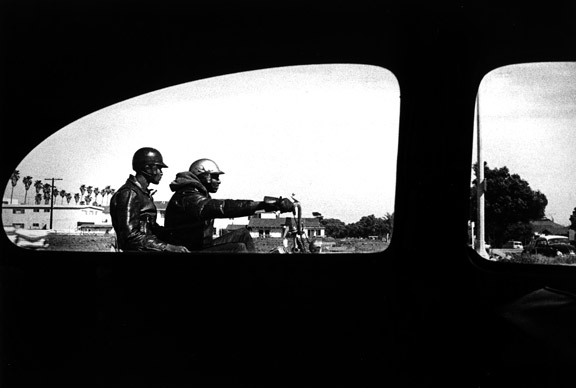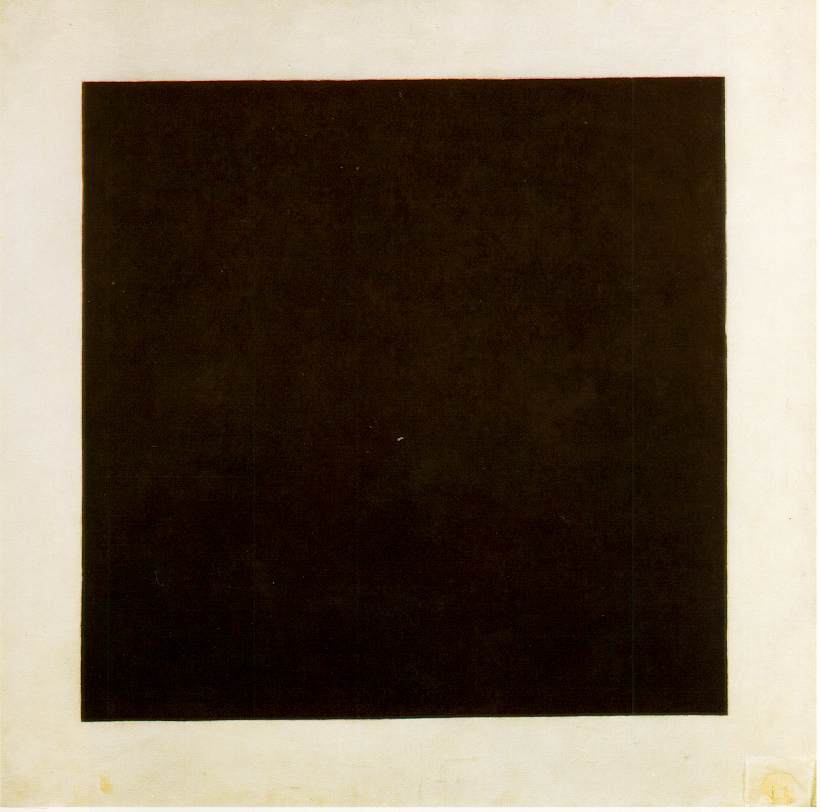Paul Strand 'Wall Street'
Black & White had authority; it turned the world into bold graphic forms; it distanced the audience from the everyday world of colour; it lifted the photograph from its surroundings and, possibly, made it art.

Black and White photography had a good 80 years head start before an acceptable colour process was developed. Even then, it was nearly another half century before documentary photographers began to take it seriously. To appreciate Black & White images it is worth considering Colour.
Niepce’s image of the roofs outside his window seems to break away from the traditions of painting and point to something else. This is the first photograph and Niepce was more interested in creating a permanent image - colour wasn't an option. However, the dark triangles, harsh angles, graphic composition, strong contrast and an abstract nature of the image that seems ‘Modern’ to my eye. It reminds me of a Supremacist painting by Malevich.
'Black Square' Malevich 1915
The De La Warr Pavillion, Bexhill 1930's Postcard
The De La Warr Pavillion in Bexhill- on-Sea is a classic example of Modernist Archtecture. Its curves and angles would not work if it was painted purple or red. It has to be be glorious minimal white. Built in the 1930's, white was still the colour of hope, despite a worldwide economic depression, the rise of Nazism in Germany and the promise of the Russian Revolution being turned to dust by Stalinism.
A 1918 woodcut by Edward Wadsworth, from “Rhythms of Modern Life.”
A Soviet Television test card - here
A Soviet Television test card - here
Robert Motherwell
Bridget Riley
Film Noir
Caravagio
Rembrandt
German Expressionism
Graphic design











